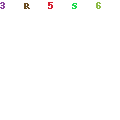I hardly remember now what my expectations were when I launched into the reading of
The Picture of Dorian Gray
, by Oscar Wilde. Certainly whatever happy thoughts they might have included have since been erased. In all honesty, I don't know what to do with this read. Did I like it? No. Not really. Am I glad to have read it? I don't know, exactly. I've held off on writing out my thoughts for about two weeks trying to decide and I'm no closer to a conclusion. I expect my overall opinion of this one will be shaped through the discussion of it.
If you are a regular around these parts, you know I tend not to pay attention to plots or subjects until I've cracked open the pages of any particular book. I like to be surprised by stories and not know too much about them before I begin. Such was the case with
The Picture of Dorian Gray
. My only interactions with the story were from a brief clip I saw from the
1945 movie version 
featuring Angela Landsbury. I never watched the full movie (although I hope to do so this week or next). (As a slight aside, after completing the book I looked up a bunch of movie trailer clips on Youtube to see if there was a more modern version that might be palatable. I discovered that Prince Caspian - or rather, the actor who played him - starred as Dorian Gray in a 2009 film adaptation which also boasts the acting talents of Colin Firth. I don't think I'll be watching the 2009 version! The trailer tells me not to. I
did, however, began watching the 2005 version starring Josh Dahumel and knew within 6 minutes it was a no-go. The story was changed significantly and the acting is downright laughable.) But getting back to the book, I paid
so little attention to it before diving in that I didn't even consciously note that Oscar Wilde was the playwright who wrote
The Importance of Being Earnest
.
That play and
this book (his only full length novel) are the two pieces of work which Wilde is most noted for.
Upon reading the Introduction, I discovered two things right off the bat:
1. Oscar Wilde practiced homosexuality. He lived in England in the turn of the century when homosexuality was a punishable crime. Wilde was eventually put on trial for his crime and his novel was brought against him as evidence, helping to convict him. He was sentenced to hard labor for two years as a result. Upon his release, he moved from England, never to return.
2.
The Picture of Dorian Gray
has strong homosexual allusions in it. In this story, a painter by the name of Basil Hallward has a passionate regard for Dorian Gray and the reader can only assume that his passion is sexual in nature. Dorian seems oblivious to Basil's feelings, being "straight" himself, but Wilde does hint at the possibility that Dorian is bi-sexual later on in the story. The description of Basil's emotions towards Dorian truly leave the reader in little doubt as to Wilde's intentions for the characters.
Upon this story's original release in 1890, the British public outcry was so harsh that Oscar Wilde was forced to revise his tale, eliminating some passages (which contained more overt homoerotic references), adding an additional seven chapters, and simplifying the moral of the story. His revised manuscript was published in 1891 and this is the version we read today. Many scholars believe that Wilde would prefer us reading his 1890 version and I don't doubt that's the case because every artist (pridefully or otherwise) prefers his original work to stand.
The book asks several questions, the chief being whether beauty should be man's chief pursuit in life. What makes something beautiful? Who decides that and in what manner do we form our conclusions? These questions may sound familiar to you, the modern reader. The other theme of the book is sin: who defines it and how (and why) shall we regulate it? We still ask such questions which is likely why people are still drawn to the story of
Dorian Gray. These questions have existed since the serpent approached Eve in the Garden of Eden and verbally parlayed with her over what sin was and whether or not it would effect her. Eve eventually sewed fig leaves together, hoping to convince God that fig leaves were beautiful and that nothing whatsoever had gone wrong. Dorian Gray wished that the portrait of him would bear the shame and disgrace of his sins, but that his physical being would be unmarred, forever beautiful, leaving no trace of his sinful behavior.
(By the way, as an aside, I am intentionally not discussing the plot here so as not to give away anything that happens in the book. If you want to know what the story is about, check out
the Wikipedia page on this book for quick and easy reference.)
Now, why can I not make up my mind whether or not I really like this book? Well, I think that is because Wilde knows sin and therefore he describes it well. Let me be quick to note that we
all sin and we
all fall short of the glory of God. It would be easy for
anyone to identify the bad behavior of Dorian Gray in this book. Whether the sin be homosexuality or murder or knocking your brother's brick tower over because you got mad at him, we humans
know sin and - if we are Christians - we know it ought to be confessed and repented of. Dorian Gray never repents and so the book feels full of despair in some respects. It's a hopeless end. Hopeless ends are hard to think about and make us uncomfortable. Do they happen? Yes. Every day. All the time. That doesn't make it any easier to read about them nor should it.
Wilde wishes to moralize his readers into questioning their morals, in an attempt to sound wise and philosophical. His ramblings on morality, however, are just a bunch of fig leaves. He cannot hide the fact that he is an unrepentant sinner. We humans
must realize and acknowledge that we are not the
source of Truth and therefore it is not ours to shape it or regulate. Scriptures are clear that God is a holy God. He has made rules for us to follow and, if we reject God's demands that we repent and turn from our wickedness, then we are in sin. He is glorious and perfect and
He would have us be in fellowship with Him (an amazing thing to consider!)! But we can only approach Him having repented and having submitted ourselves to Him as our Redeemer and Lord. It is not for us to decide how our repentance should look or what it should entail but ours to submit to and be grateful. Wilde does not acknowledge this and so the book is rather painful to read. Wilde clearly could not be happy, neither could his characters, and there is sorrow in that.
At the same time, this book is
interesting to read as a Christian because it takes a good look at what life looks like when you have not repented of your sins. Dorian had a chance to see the blackness of his soul. We don't have pictures hanging in our homes which display to us the depths of our depravity but what if we did? We would probably hide them in dark, secret, locked up rooms also. In truth though, we
do try to hide our sins. It always proves a futile, desperate attempt to hide our sins but still - we try! Dorian Gray offers a more visibly concrete idea of the need to see our sin, call it for what it is, and deal with it, rather than trying to make it sound glamorous and beautiful. Dorian Gray is definitely a thought-provoking read, even if it does provoke unpleasant thoughts. I would never say that this book is to be avoided. I can only go so far as to say that it was not an
enjoyable read for me because it was so full of secret despair. It is a short book that really packs a punch, that much is certain!
I'm definitely interested in hearing what the rest of you thought of this book, whether you read it along with the book club this month or have read it sometime in the past.
Note: This is not the concluding post for the book club. Bekah will be back to share her concluding thoughts on this book next week so stay tuned for that.

























